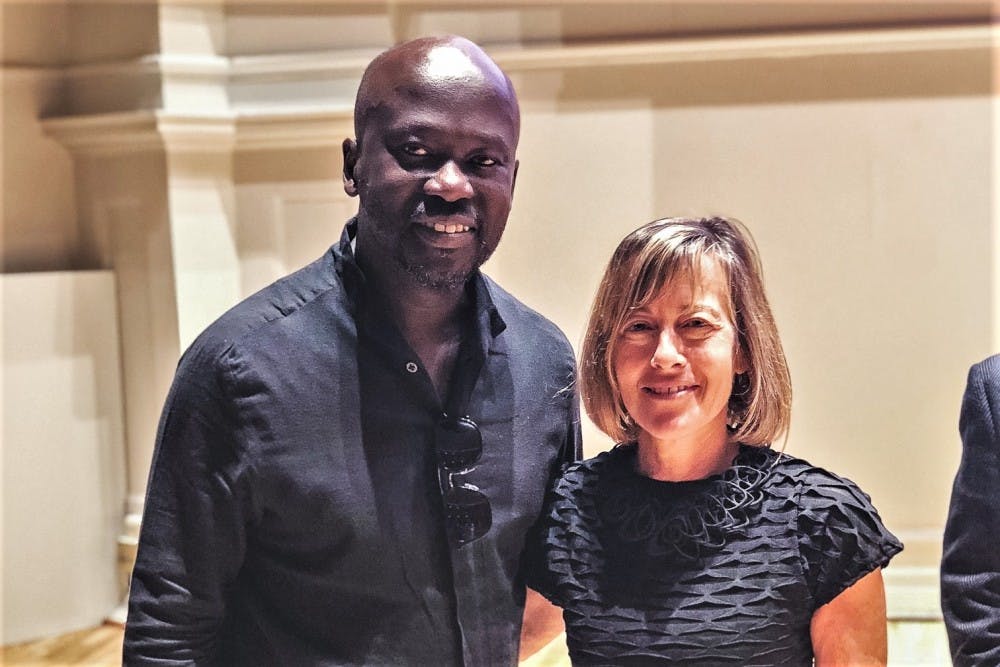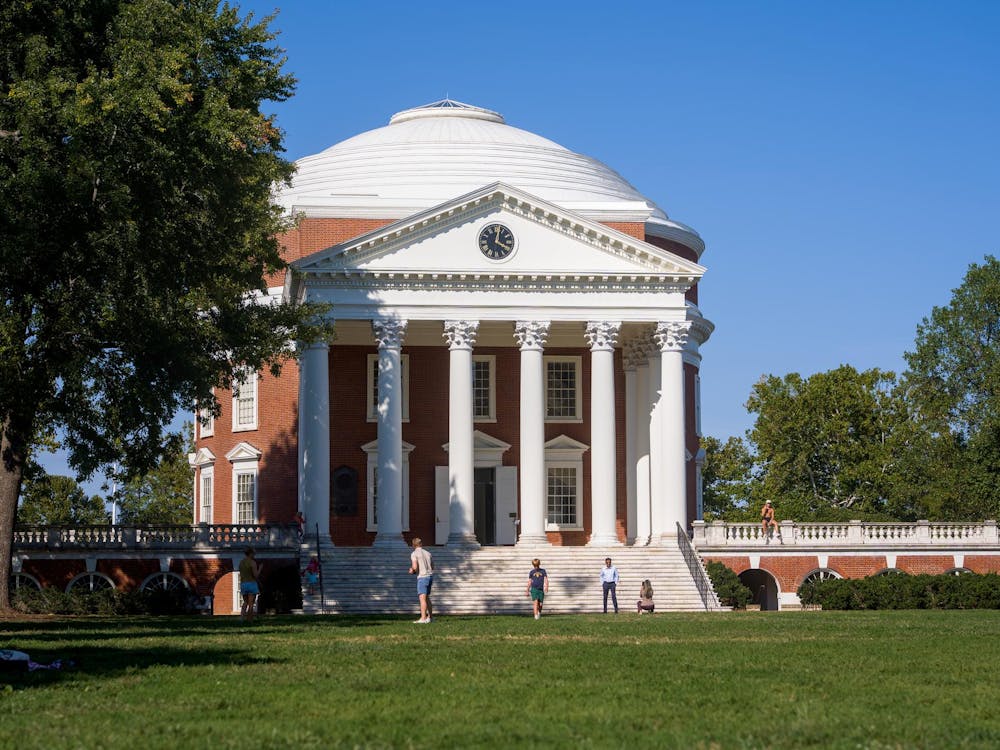Sir David Adjaye, the 2018 Thomas Jefferson Foundation Medalist in Architecture, spoke Friday afternoon in Old Cabell Hall about his experience and work as an architect who designed internationally-acclaimed buildings, including the Smithsonian National Museum of African American History and Culture in Washington, D.C.
Adjaye is the founder of international architecture firm Adjaye Associates and has amassed a number of awards for his work with the firm. Adjaye was knighted by Queen Elizabeth II for his contributions to the field of architecture in 2017 and was named by TIME as one of its 100 most influential people the same year.
Thomas Jefferson Foundation medals — given to individuals in the fields of architecture, law and citizen leadership — are awarded to those who embody the ideals and virtues Jefferson held in high regard, as illustrated by his penning of the Declaration of Independence and founding of the University. Awards are presented annually on the anniversary of Jefferson’s birthday, April 13, by the University president and the president of the Thomas Jefferson Foundation.
Adjaye joins a number of prominent architects, designers and planners who have also been recipients of the architecture award, including Frank Gehry in 1994, Jane Jacobs in 1996 and Zaha Hadid in 2007.
Architecture Dean Ila Berman introduced Adjaye Friday afternoon as “one of the most creative architects of his generation.”
“If there is anything that Adjaye and Thomas Jefferson have in common, it is their shared belief that architecture has the potential to spark positive social change in the world,” Berman said.
Adjaye opened and closed his talk with highlights from two of his firm’s ongoing projects — the Studio Museum in Harlem, New York, and the National Cathedral of Ghana in Accra. Adjaye described the influence that African-American culture as expressed through various forms of architecture had on his work, notably the theme of public life as expressed through space.
“It’s a theme that I’m continually exploring and evolving through,” Adjaye said.
The majority of the talk was spent highlighting the significance of his most prolific project to date, the $540 million Smithsonian Institution National Museum of African American History and Culture, which opened in Washington, D.C. in the fall of 2016.
An audience listened closely as Adjaye described the background of the building and how the museum was an unprecedented addition to the National Mall in Washington, D.C. Even with a construction time of 10 years, the museum boasts the most rapid construction time out of any other building on the National Mall. The museum is also the first building on the National Mall to be LEED certified and to have porch space.
However, the sociopolitical context of the site placed a heavy weight on the project. Adjaye discussed the former existence of a slave market on the northern exposure of the site and noted that in Pierre Charles L’Enfant’s original plan for Washington, D.C., the site was meant to be nothing more than a “gatehouse” for the more opulent palaces that stretched beyond it.
For Adjaye, the challenging connotations of the site added to his overarching goal of making the building able to profoundly convey the language of African-American culture and history.
“This museum really tries to make the history of the invisible visible,” Adjaye said, noting the narrative of the museum as one that strived to “see if one could imagine a future where colonization hadn’t happened … and the slave trade hadn’t happened.”
Adjaye described the museum as a space that invited individuals from all walks of life to engage with the ongoing narrative of African-American history. This is reflected through visual transparency, sight lines of other Washington landmarks and iron work on the facade of the building that evokes architectural designs made by American slaves. The museum also boasts a collection of 40,000 artifacts from communities all over the United States and world.
“The city is alive and ultimately changing and growing, and the building is participating in that,” Adjaye said.
The School of Architecture hosted several other events to honor Adjaye during the week of April 9, including a screening of a documentary about the work of Adjaye and a conversation between Adjaye, the student chapter of the National Organization of Minority Architects and the School of Architecture’s student leadership.
The work of Adjaye Associates will be on exhibition in Campbell Hall’s Elmaleh Gallery from April 12 through April 25.







